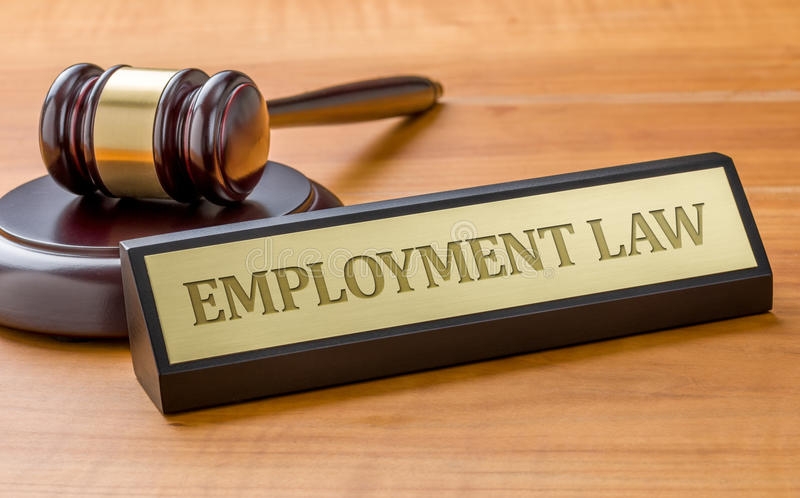Unconscious Bias and the Law | Workplace Discrimination
July 20, 2020 | By: Richard Lyons
 This short article is written against the background of the me too movement and black lives matter. It’s aim is to give pause for thought, as we ask ourselves whether it’s possible that we may have at one time or another demonstrated unconscious bias.
This short article is written against the background of the me too movement and black lives matter. It’s aim is to give pause for thought, as we ask ourselves whether it’s possible that we may have at one time or another demonstrated unconscious bias.
Jennifer Eberhardt is a Professor, in the Department of Psychology at Stanford University. She grew up in a black Cleveland neighborhood, but in her later childhood the family moved to a predominantly white suburb. Contrary to her fears, her new classmates were welcoming. But as much as she tried to reciprocate their attention, she had trouble telling them apart. So she trained herself to recognize features she had never paid attention to before—“eye color, various shades of blond hair, freckles.” Eberhardt has written that the phrase “they all look alike,” long the province of the bigot, “is actually a function of biology and exposure.” There’s no doubt plenty of overt bigotry exists, Eberhardt says but she has found that most of us also harbour bias without knowing it. It stems from our brain’s tendency to categorize things—a useful function in a world of infinite stimuli, but one that can lead to discrimination, baseless assumptions, and worse, especially in times of stress.
Unconscious Bias at Work
There is now ample evidence that unconscious bias seeps into decisions that affect recruitment, access to healthcare and outcomes in the criminal justice in ways that can disadvantage people from ethnic minorities. White job applicants were found to be 74% more likely to have success than applicants from ethnic minorities with identical CVs. University professors were found to be far more likely to respond to emails from students with white-sounding names. White participants in a study were found to perceive black faces as more threatening than white faces with the same expression. Whether we like it or not, these streams of unconscious thought can effect the decisions we make.
In part that is why the law of discrimination is framed in the way it is. We can stand up, hand on heart and claim not to be racist, ageist or sexist, but how can we really know that if we’re hard wired to react in a certain way. The simple answer is we can’t, and so the law makes use of a reverse burden of proof and inferences in an attempt to redress the fact that we sometimes cannot contemplate that we might have an unconscious bias. Who reading this really believes that they have sexist, ageist or racist qualities?
The extent to which our biases are internalised and acted on can vary widely depending on our life experiences. If you date outside your racial group or have a boss from a minority group, it can help to open your eyes and help guard against holding negative stereotypes; an awareness of what might be lurking in our psyche is vital.
Practical Guidance for Employers
So what can we do? Possession is often said to be nine tenths of the law. That equation applies equally to knowledge and unconscious bias.
- Unconscious bias training is one way of tackling this blind spot, although that too has its critics.
- As an employer you should not only ensure that your equality and diversity policies are up to date, but you can properly invest in really trying to understand those polices, how unconscious bias works, and then do something about it.
- Bring your policies to life as you uncover their purpose, and then train your employees accordingly. If you want a tangible benefit from that, it might protect you one day in an employment tribunal as you deploy what’s known as the statutory defence. That can protect the employer even if an employee has committed an act of discrimination. All you need to show is that you have done everything you can to protect your employees from discrimination.
- We have good evidence that those in recruitment can shift their recruitment criteria depending on the profiles of competing candidates in a way that can disadvantage women and minority ethnic groups. If however, recruiters are required to write down their priorities before selection begins, this effect tends to disappear.
In a time when we’re all being asked to examine our own views and core values, widening that contemplation to consider how our values and views might apply in our workplaces has never been more important.
Need Employment Law and HR advice you can trust? Speak to our team today to arrange your FREE Consultation.Share this with a friend:
 This short article is written against the background of the me too movement and black lives matter. It’s aim is to give pause for thought, as we ask ourselves whether it’s possible that we may have at one time or another demonstrated unconscious bias.
Jennifer Eberhardt is a Professor, in the Department of Psychology at Stanford University. She grew up in a black Cleveland neighborhood, but in her later childhood the family moved to a predominantly white suburb. Contrary to her fears, her new classmates were welcoming. But as much as she tried to reciprocate their attention, she had trouble telling them apart. So she trained herself to recognize features she had never paid attention to before—“eye color, various shades of blond hair, freckles.” Eberhardt has written that the phrase “they all look alike,” long the province of the bigot, “is actually a function of biology and exposure.” There’s no doubt plenty of overt bigotry exists, Eberhardt says but she has found that most of us also harbour bias without knowing it. It stems from our brain’s tendency to categorize things—a useful function in a world of infinite stimuli, but one that can lead to discrimination, baseless assumptions, and worse, especially in times of stress.
This short article is written against the background of the me too movement and black lives matter. It’s aim is to give pause for thought, as we ask ourselves whether it’s possible that we may have at one time or another demonstrated unconscious bias.
Jennifer Eberhardt is a Professor, in the Department of Psychology at Stanford University. She grew up in a black Cleveland neighborhood, but in her later childhood the family moved to a predominantly white suburb. Contrary to her fears, her new classmates were welcoming. But as much as she tried to reciprocate their attention, she had trouble telling them apart. So she trained herself to recognize features she had never paid attention to before—“eye color, various shades of blond hair, freckles.” Eberhardt has written that the phrase “they all look alike,” long the province of the bigot, “is actually a function of biology and exposure.” There’s no doubt plenty of overt bigotry exists, Eberhardt says but she has found that most of us also harbour bias without knowing it. It stems from our brain’s tendency to categorize things—a useful function in a world of infinite stimuli, but one that can lead to discrimination, baseless assumptions, and worse, especially in times of stress.




